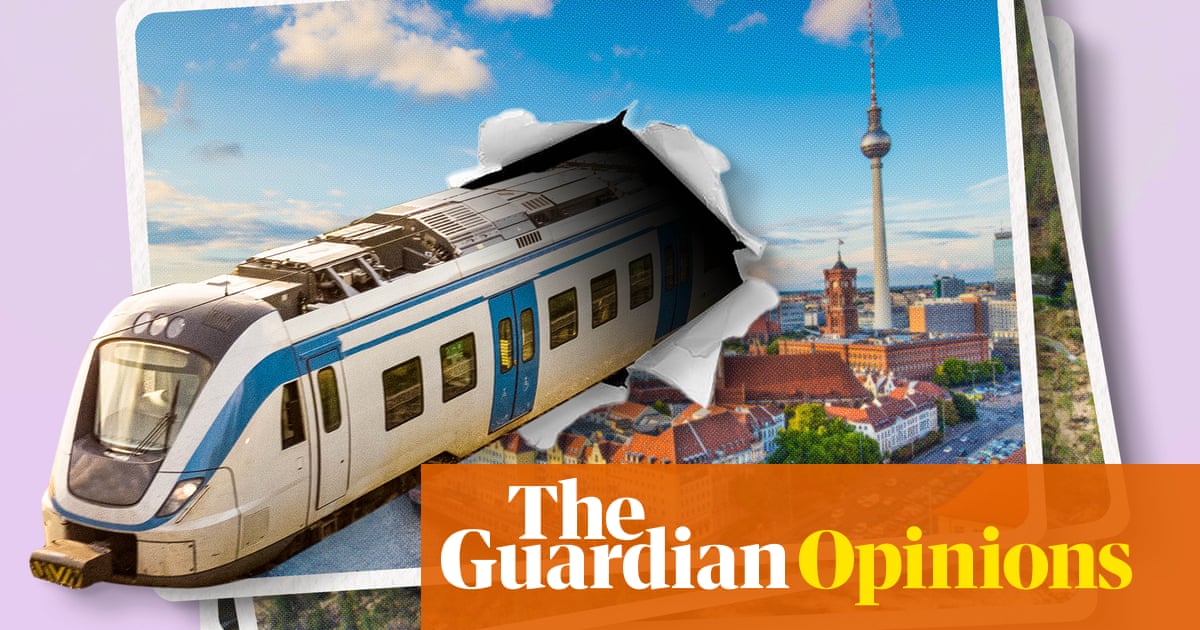Youth might not be wasted on the young, but for the longest time I thought Interrailing was. When I was a student, as the 1980s became the 1990s, many of my friends took the opportunity to discoverEuropeby train and they all returned with amazing stories of discovery. But for long-forgotten reasons, it was something I was always going to do but never actually got round to. And then suddenly I was in my late 20s and reluctantly resigned myself to never doing it, having been reliably informed by so many people that it was an opportunity only open to those under the age of 26.
Fast forward a few decades to spring 2023 and I’m trying to decide where to take my teenage children for our first holiday in five years – a gap caused largely, but not wholly, by the pandemic. My most memorable childhood holiday had come in 1981 when, over the course of a few days, my dad drove my family and our caravan from Nottingham to Pisa. I still remember the incredible feeling of my horizons broadening overnight. I’d love to give my children a similar experience, except I don’t drive.
And then I start to see excitable posts from a Facebook friend about his family Interrail trip from Edinburgh to Slovenia and back. “But … but … he’s too old for that,” I thought to myself, before the penny belatedly dropped and I hastily checked out theInterrail(Eurail for non-European residents) website. And there,30 years late, I finally discovered the truth: theage restriction is long gone. And nobody had thought to tell me! People older than 26 can still go Interrailing! Yes, it’s marginally more expensive, but hardly prohibitively so. So I cobbled together an itinerary and a few weeks later my two sons and I set out on a voyage of discovery. It was such a success that we did it again (to different places) in summer 2024.
In short, Interrailing was a revelation – for me and for my children. Any doubts I may have had about travel broadening the mind were quickly dispelled when, on the first day of our first trip, I saw my elder son’s sheer amazement at the way the departure boards on the metro in Brussels differed from those on London’s tube, or – a few days later – my younger son’s delight at seeingBerlin zoo’s giant pandas.
There were mishaps along the way: some homesickness in Vienna; a spectacular inability to read a weather forecast and then dress accordingly in Prague; a poorly child in Bergen necessitating a tour of the city’s chemists rather than a nearby national park. But more often, what initially seemed to be a major problem turned out to be an opportunity to discover fresh wonders.
When I was too spontaneous with our travel plans for Deutsche Bahn’s liking and realised that I’d left it too late to book us on to the Hamburg-Kolding train, I was terrified that we might not get to Legoland Denmark, very much the jewel in the crown of my younger son’s trip. This would have been a dereliction of duty I feared might be unforgivable. But there was a slower, moresedate alternativeto the Hamburg-Copenhagen express – which proved to be an absolute delight, wending its way across the hypnotically flat Schleswig-Holstein countryside and necessitating briefly changing on to seemingly the world’s tiniest train in Tønder,Denmark’s answer to Gretna Green. It took us several hours longer, but seeing parts of northern Germany and western Denmark that were far off the beaten (railway) track felt like an adventure in itself.
That ability to glimpse Europe’s more obscure spots is one of the massive advantages Interrailing has over air travel, where you’re whisked from one interchangeable airport to another, going from your home city to the tourist destination of your choice and skipping all that lies in between – the beautiful, the bleak, the places that understandably don’t appear in guidebooks, the messy thrill of actual real life – and seeing only the sanitised endpoints. And so, unlike air travel, where the transit element of a holiday is at best a soul-sapping chore in consumerism hell, the actual journeys were as much a part of the holiday as any of our destinations, whether we were on theOslo-Bergen line, which is habitually – and rightly – described asone of the most scenicin Europe, or theZutphen-Hengeloline in the eastern Netherlands, which is not, but did have the bonus of a garrulous passenger keen to know my children’s views on Brexit (they had many) and the state of Belgium’s roads (they had none). (For the record, he was a fan of neither.)
That slower pace of travel brings other benefits, too: it’s hard to get a grip on how vast and varied Europe is when you can fly over it in the time it takes to digest an airport sandwich. By train it can take almost a full day just to cross Germany. That pace affords a greater connection with your surroundings. As a series of trains gradually took us north from Calais to Oslo last summer, we could watch as the architecture of churches and houses changed; as oak slowly gave way to beech to spruce to white birch; as cedillas on signs were replaced by umlauts and then overrings.
Sign up toThis is Europe
The most pressing stories and debates for Europeans – from identity to economics to the environment
after newsletter promotion
It offers a wholly different view of Europe in all its vibrant diversity, and my children are hooked, even planning their own future itineraries for when they’re old enough to travel without this particular chaperone. Until then, no prizes for guessing what we’re doing thissummer. I may have been too old for Club 18-30 long before it waspensioned off, but, as I have belatedly realised, you’re never too old to go Interrailing.
Phil Mongredien is a production editor on Guardian Opinion and Long Reads
